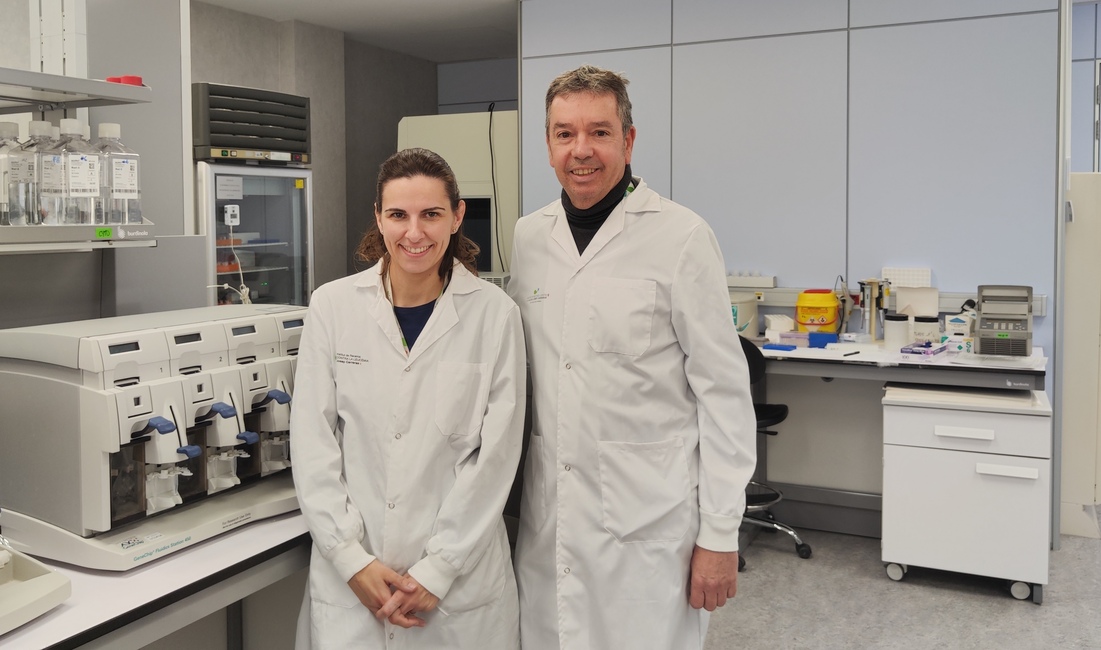New molecular features associated worst prognosis myelodysplastic syndromes with normal karyotype
In a recent publication at the journal eJHaem, a team of researchers from the Josep Carreras Leukaemia Research Institute have given supporting evidence that the presence of the so-called “regions of homozygosity” in the genome of patients with myelodysplastic syndrome with no detectable chromosomic abnormalities confer a worst prognosis, especially when these regions are larger than 25 megabases.

The last decade has seen a growing use of cutting-edge molecular methodologies to help in the diagnosis and risk assessment of myelodysplastic syndromes amongst the clinical community. There is solid evidence that considering molecular information improves the stratification of patients and helps selecting the best treatment in the clinical management of patients.
Today, the gold standards to classify and assess the risk of myelodysplastic syndromes are the IPSS-R and the IPSS-M, the latter including molecular information from the patient. Both systems are highly dependent on cytogenetic information, this is, the appearance of chromosomes under the microscope.
Classical cytogenetics are still powerful methods, since many tumors bear large-scale chromosomal rearrangements that can be seen on the microscope, but nearly 50% of myelodysplastic syndromes display a “normal” chromosomal setting and are thus classified as having a “normal karyotype”, regardless of having alterations too small to be detected by these classical means. These smaller alterations can be made apparent by using molecular methodologies and, when considered, the number of myelodysplastic syndromes with normal karyotype can be reduced down to 20 to 30% of the cases.
Recently, a team led by Dr. Mar Mallo, researcher at the Myelodysplastic Syndromes group at the Josep Carreras Institute and head of its Microarrays Unit, has identified a chromosomal feature, not visible under the microscope but detectable by using modern microarray technologies, having a high impact on the prognosis of these syndromes: the presence of regions of homozygosity.
These regions refer to when a person inherits exactly the same fragment of a chromosome from both parents – we inherit a copy for each of our 23 chromosomes from our biological father and another copy from our biological mother, and both copies tend to be slightly different. These identical regions are called “homozygous” and if happen to carry an abnormal version of an important gene, the carrier may have a genetic predisposition to develop a particular disease.
In the study by Dr. Mallo and national and international colleagues, published at one of the official journals of the British Society for Haematology, eJHaem, the presence of such regions of homozygosity in a set of 163 cases was tightly associated with the development of Acute Myeloid Leukemia and shorter overall survival in patients with a diagnosed myelodysplastic syndrome with normal karyotype. The association was stronger when the regions were larger than 25 megabases long. The work was a joint effort with international researchers from Austria, France, Taiwan, Germany, UK, Italy and Spain.
If included in the clinical practice, these results may help assess the risk associated with a myelodysplastic syndrome with normal karyotype and orient the patients’ clinical management, improving the chances of long-term survival and their quality of life.
Reference article:
Mar Mallo, Heinz Tuechler, Leonor Arenillas, Sophie Raynaud, Thomas Cluzeau, Lee-Yung Shih, Chiang Tung-Liang, Christina Ganster, Katayoon Shirneshan, Detlef Haase, Martí Mascaró, Laura Palomo, José Cervera, Esperanza Such, Nicola Trim, Sally Jeffries, Emma Ridgway, Giovanni Marconi, Giovanni Martinelli and Francesc Solé. “Regions of homozygosity confer a worse prognostic impact in myelodysplastic syndrome with normal karyotype”. 07 February 2023 https://doi.org/10.1002/jha2.651